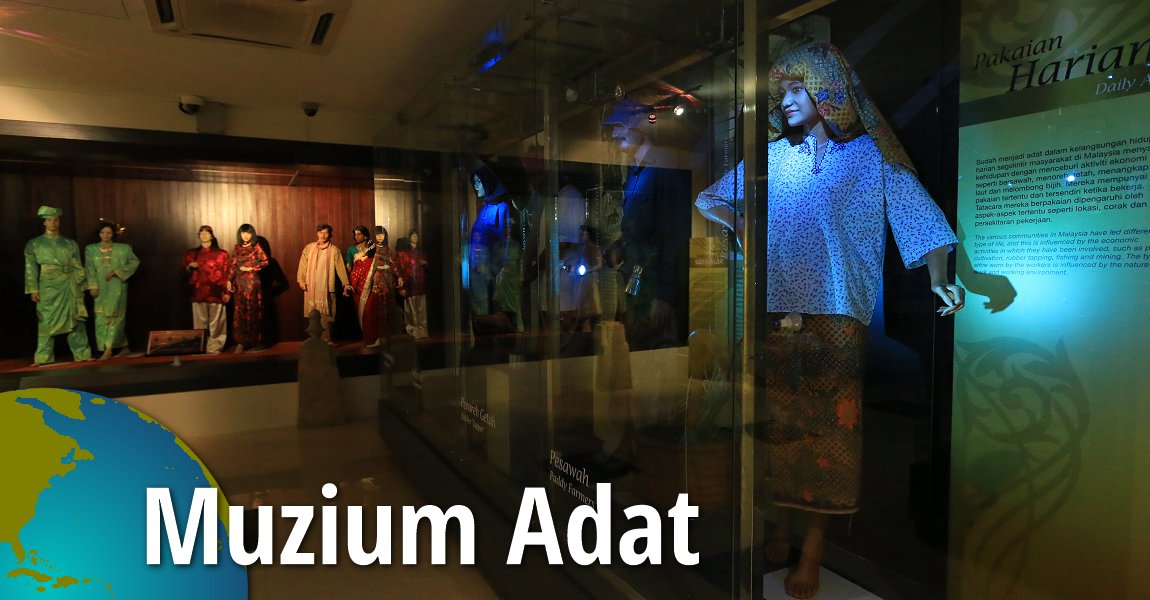 Muzium Adat, Kuala Klawang (10 July, 2016)
Muzium Adat, Kuala Klawang (10 July, 2016)
Muzium Adat (GPS: 2.93774, 102.07092) is a museum in Kuala Klawang, Negeri Sembilan. It is housed in a five-storey building. At the porch is a sculpture of the tengkolok, or Malay headgear. The museum is managed by Jabatan Muzium Malaysia.
Muzium Adatis the first museum of its kind in the country that showcases the customs and traditions of the various communities in Malaysia. Muzium Adat was officiated by the Undang Luak Jelebu, Dato' Mendika Menteri Akhirulzaman Dato' MUsa bin Wahab, in the presence of the Minister of Culture, Arts and Heritage Malaysia, Datuk Seri Utama Dr Rais Yatim and the Menteri Besar of Negeri Sembilan, Dato' Seri Utama Mohamad Hasan.
There are four galleries at Muzium Adat, spread across four levels of the building. On the ground floor is the gallery introducing the customs of the communities of Malaysia. On the first floor is the gallery on the circle of life. It includes exhibits on birth, marriage, death and various economic rituals. The gallery of second floor showcases intellectual pursuits of the palace and the common people, as well as the institution of Malay rulers. The gallery on the third floor showcases Negeri Sembilan's unique Adat Perpatih, which is practised by the Minangkabau community which originated from Tanah Minangkabau in Sumatra.
Address
Muzium AdatJalan Dato' Umbi,
71600 Kuala Klawang,
Negeri Sembilan.
Phone: +60-6-613 6586/6621
Muzium Adat is open every day from 9:00am to 5:00, except during the Aidilfitri and Aidil Adha public holidays. Admission is free.
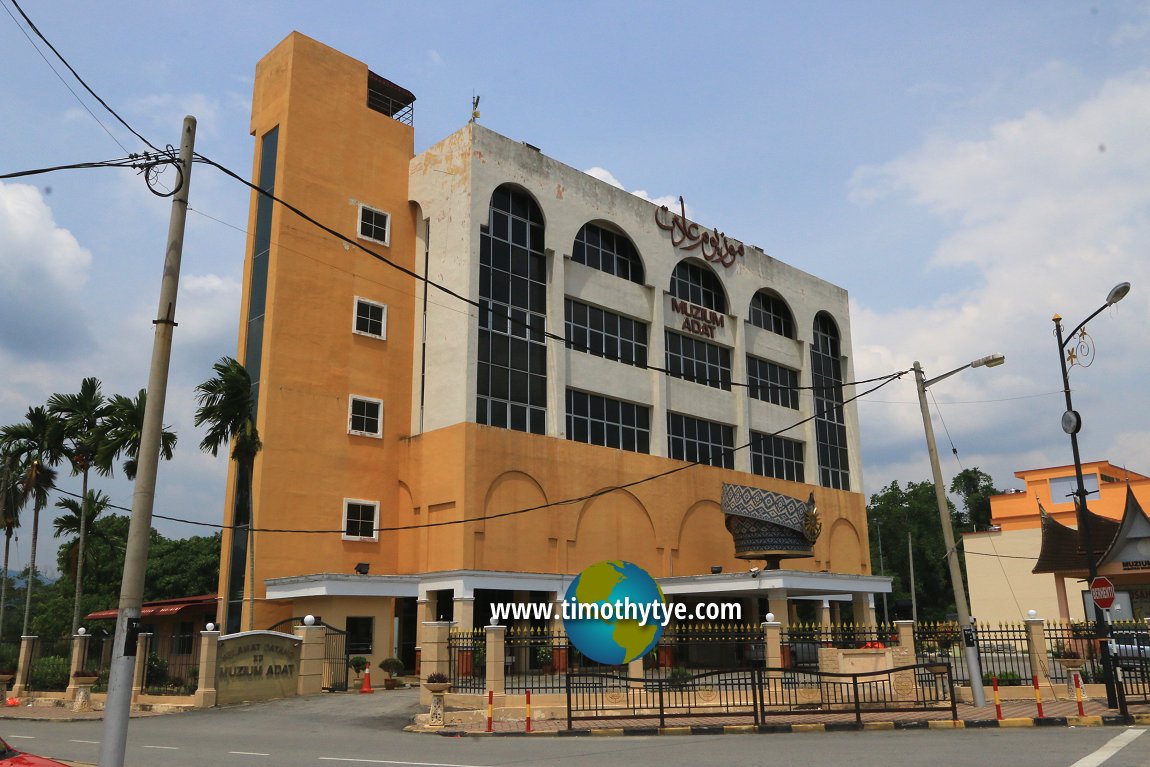 Muzium Adat in Kuala Klawang. (10 July, 2016)
Muzium Adat in Kuala Klawang. (10 July, 2016)
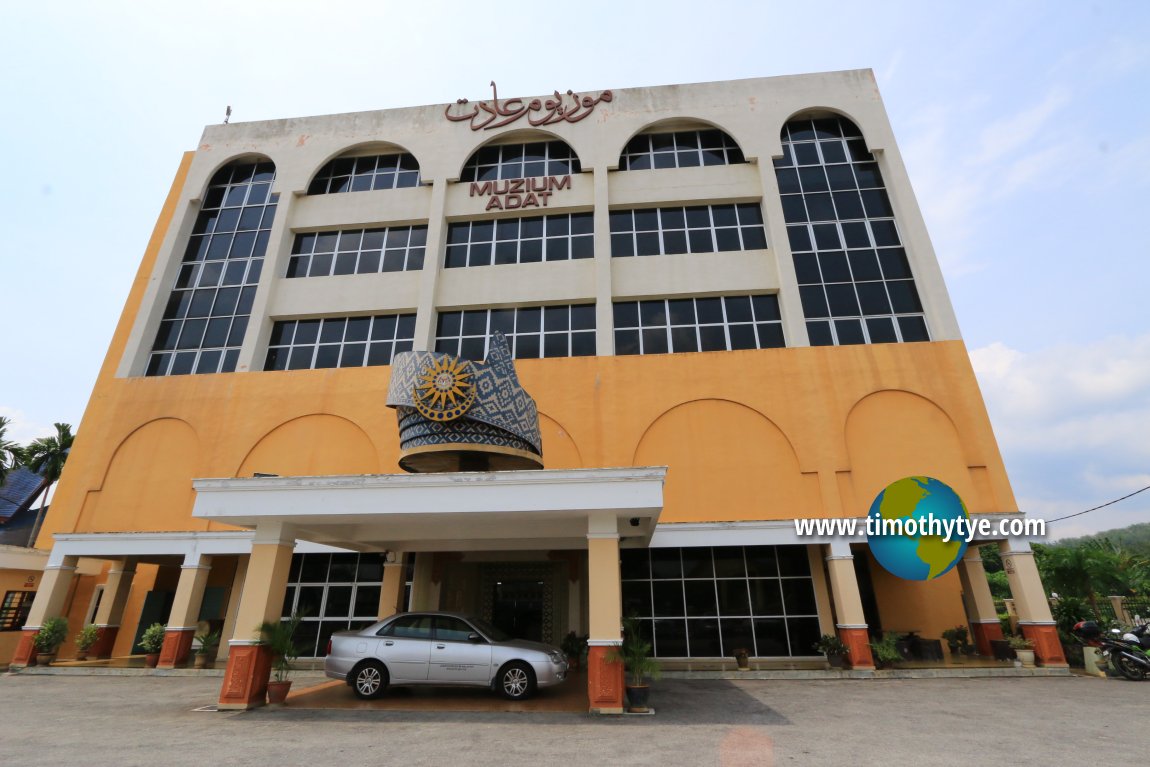 Another view of Muzium Adat. (10 July, 2016)
Another view of Muzium Adat. (10 July, 2016)
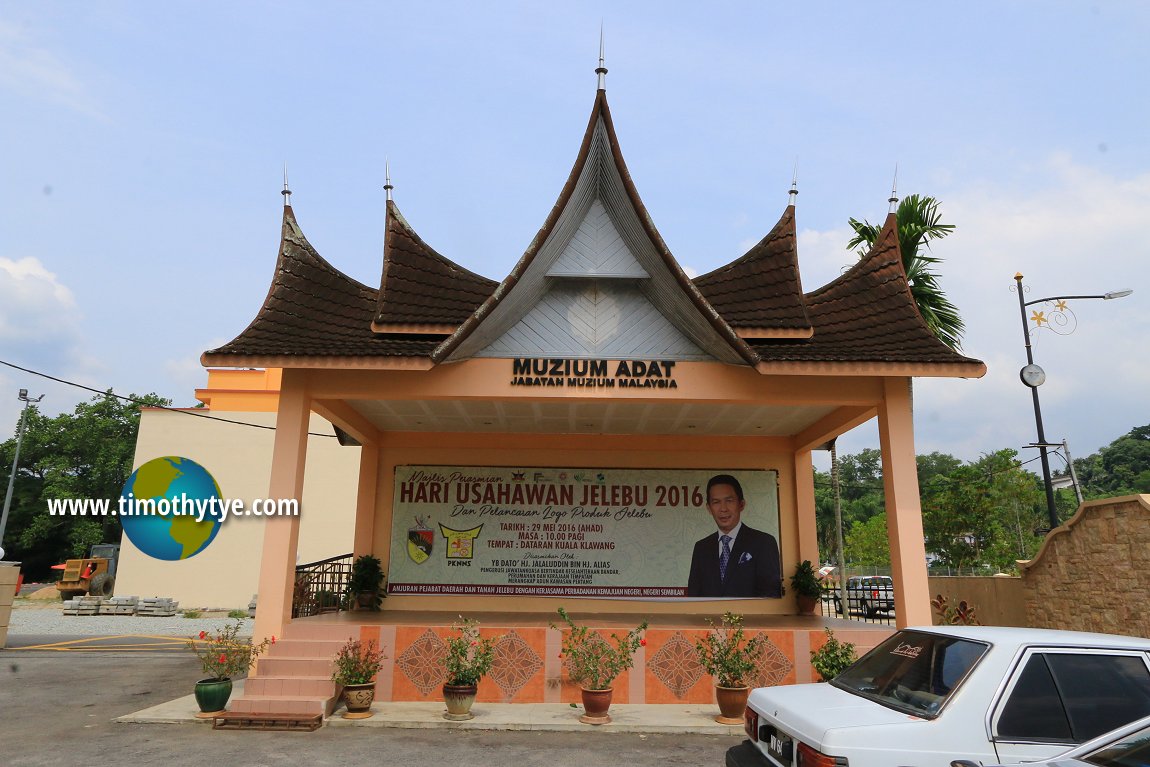 A stage at the compound of Muzium Adat. (10 July, 2016)
A stage at the compound of Muzium Adat. (10 July, 2016)
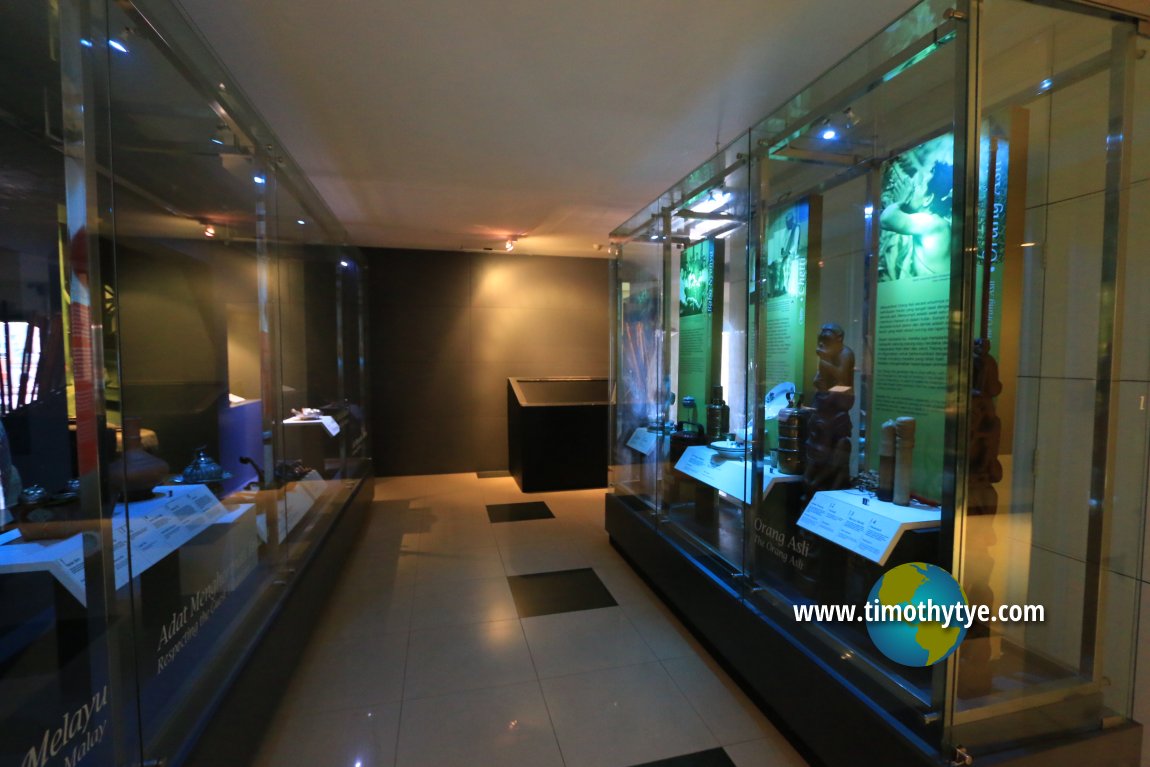 Gallery exhibiting local customs including the Malay, Chinese and Orang Asli. (10 July, 2016)
Gallery exhibiting local customs including the Malay, Chinese and Orang Asli. (10 July, 2016)
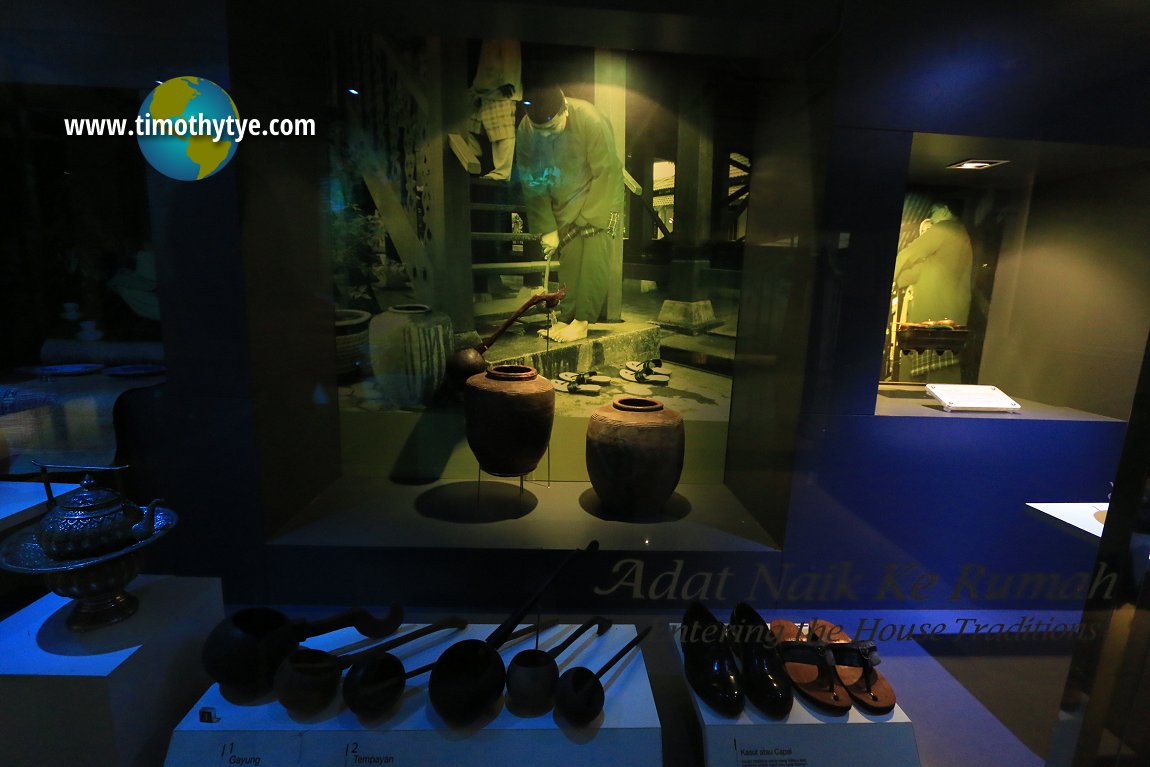 "Entering the House" traditions. (10 July, 2016)
"Entering the House" traditions. (10 July, 2016)
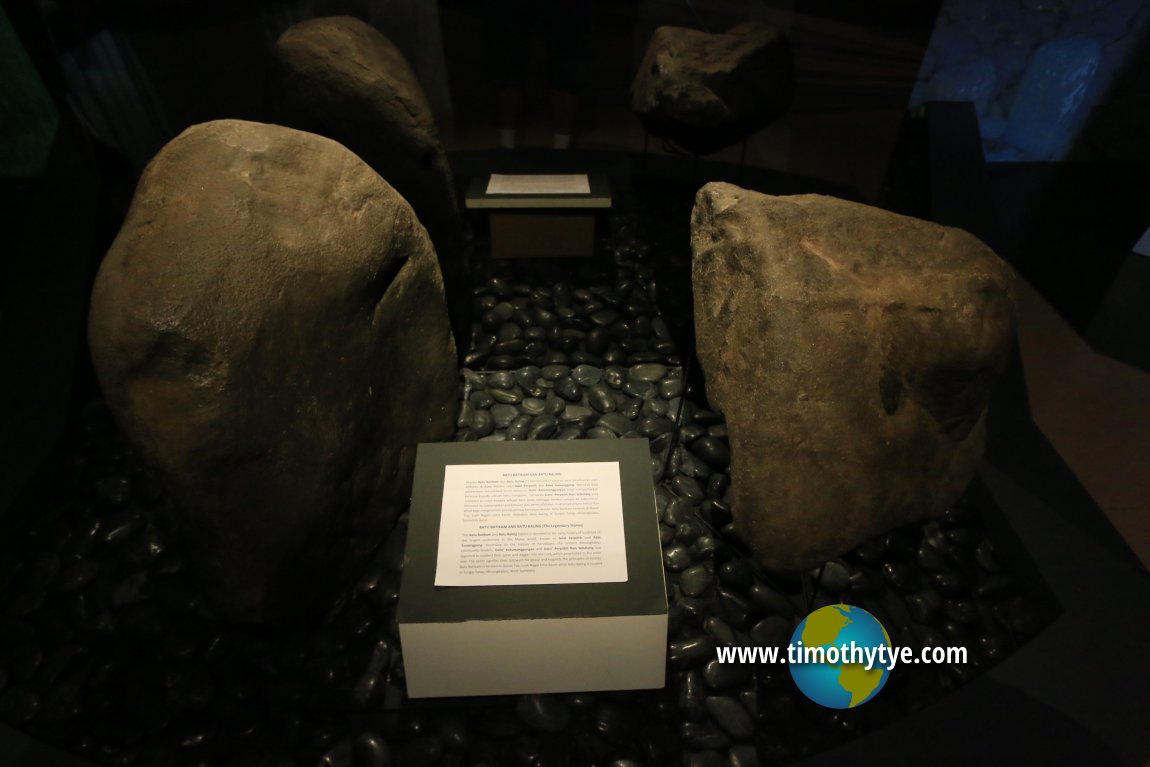 Replica of Batu Batikam and Batu Baling. (10 July, 2016)
Replica of Batu Batikam and Batu Baling. (10 July, 2016)
Batu Batikam and Batu Baling are related to Minangkabau culture. According to legend, the ancient Minangkabau chiefs, Dato' Ketumanggungan and Dato' Perpatih Nan Sebatang stabbed their spears into the rocks, penetrating right through to the other side. The event signified peace and respect for the principles of society. The actual Batu Batikam is at Dusun Tua, in Luak Nagai Lima Kaum, while Batu Baling is at Sungai Tarap, in Minangkabau, in West Sumatra.
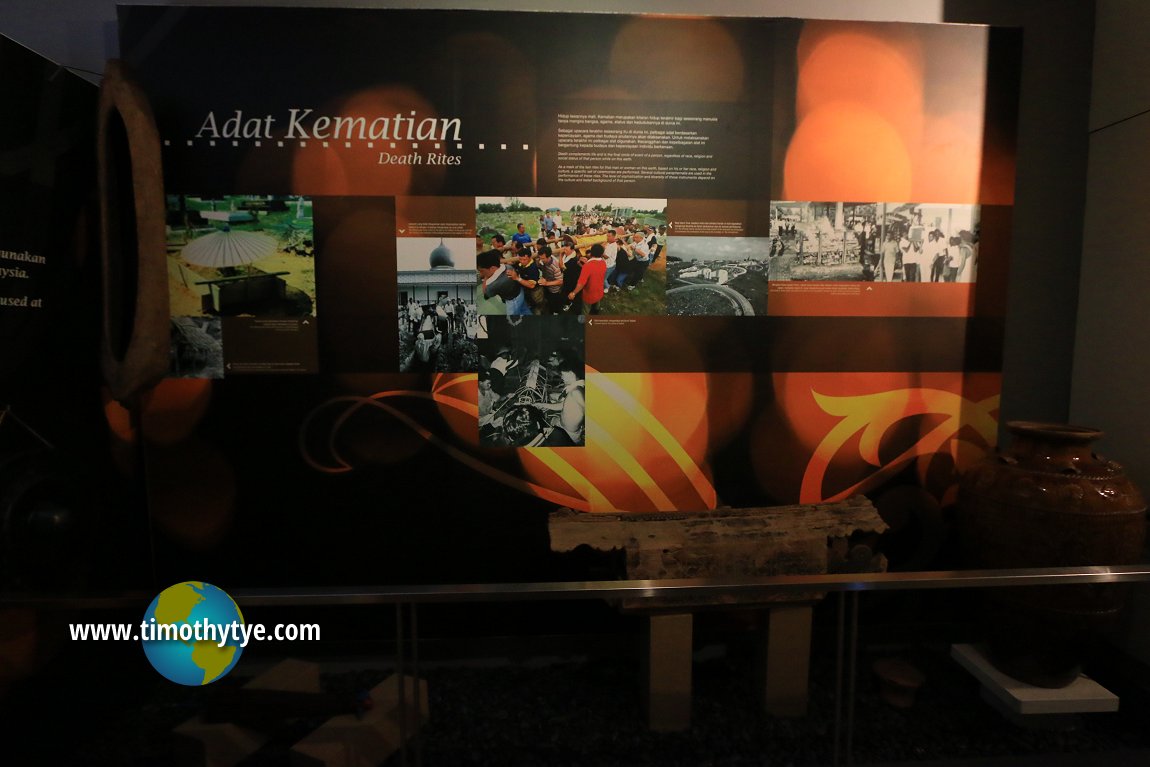 The exhibits on Death Rites include coffins and funerary urns. (10 July, 2016)
The exhibits on Death Rites include coffins and funerary urns. (10 July, 2016)
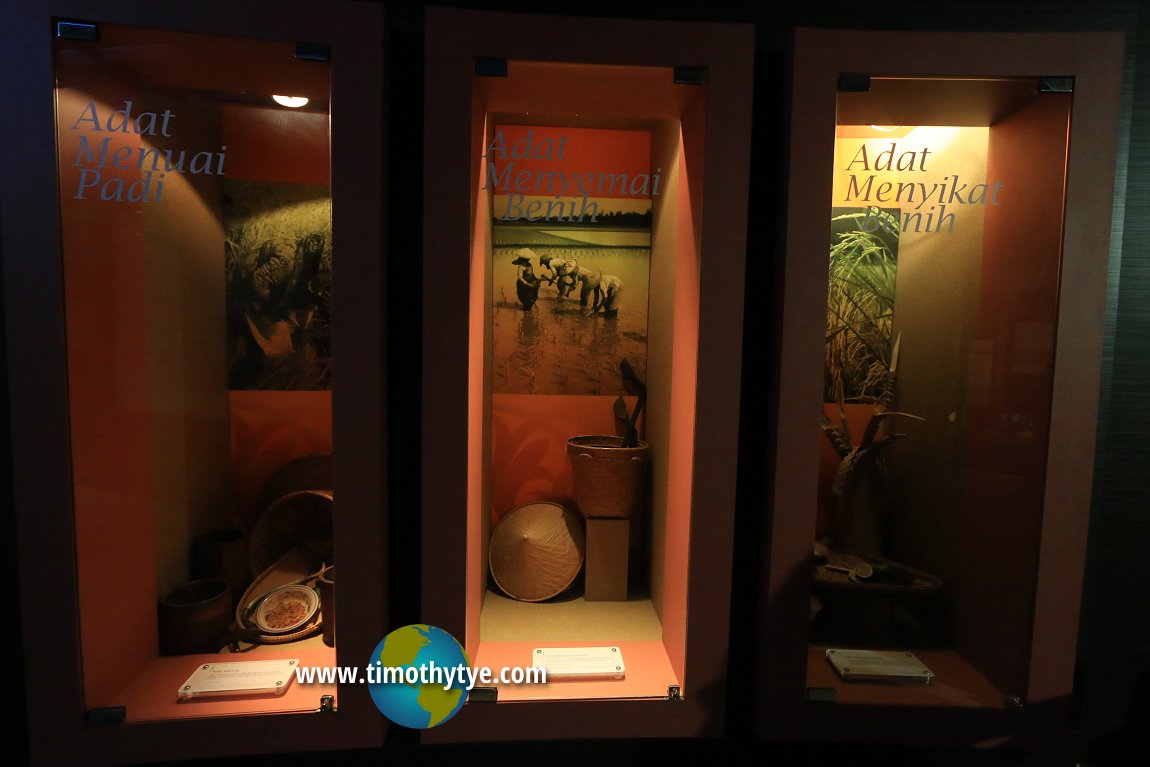 Implements connected to paddy planting rites. (10 July, 2016)
Implements connected to paddy planting rites. (10 July, 2016)
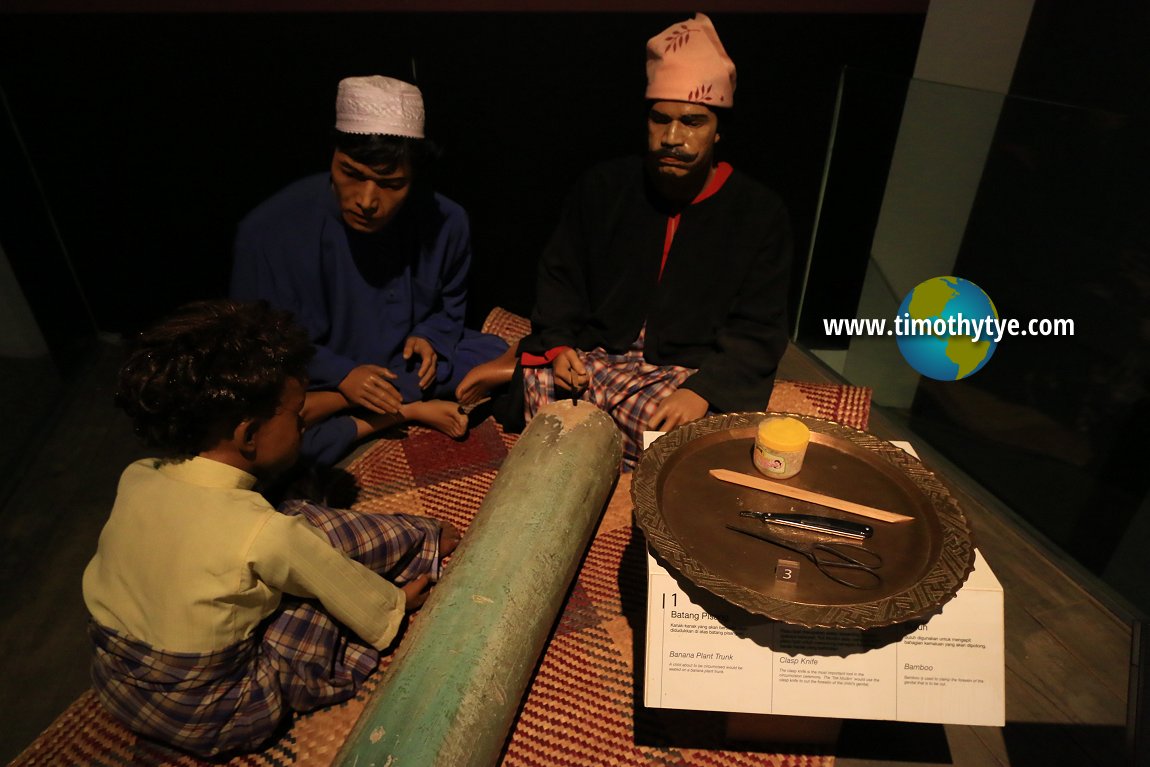 Circumcision rite. (10 July, 2016)
Circumcision rite. (10 July, 2016)
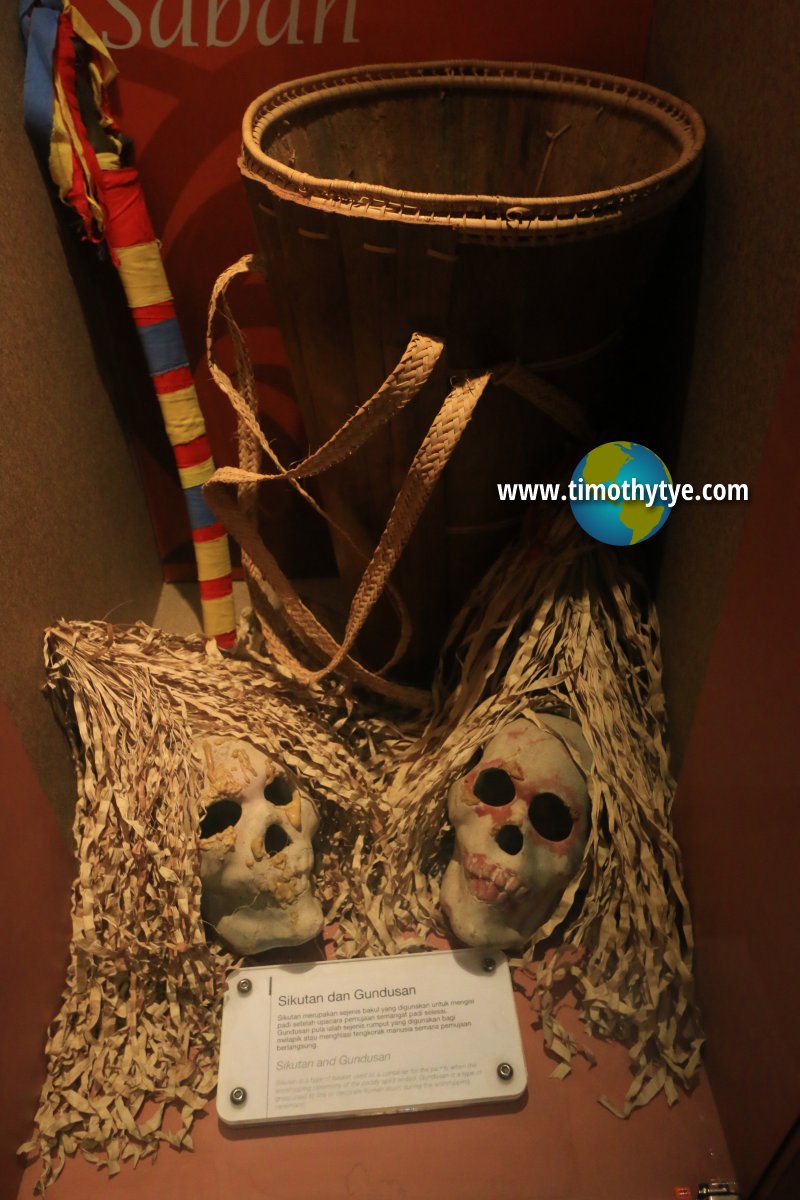 Sikutan and Gundusan. (10 July, 2016)
Sikutan and Gundusan. (10 July, 2016)
Sikutan is a basket used for carrying rice. It is used at the conclusion of the ritual to worship the rice spirit. Gundusan is a grass wig used to decorate human skulls during the ceremony.
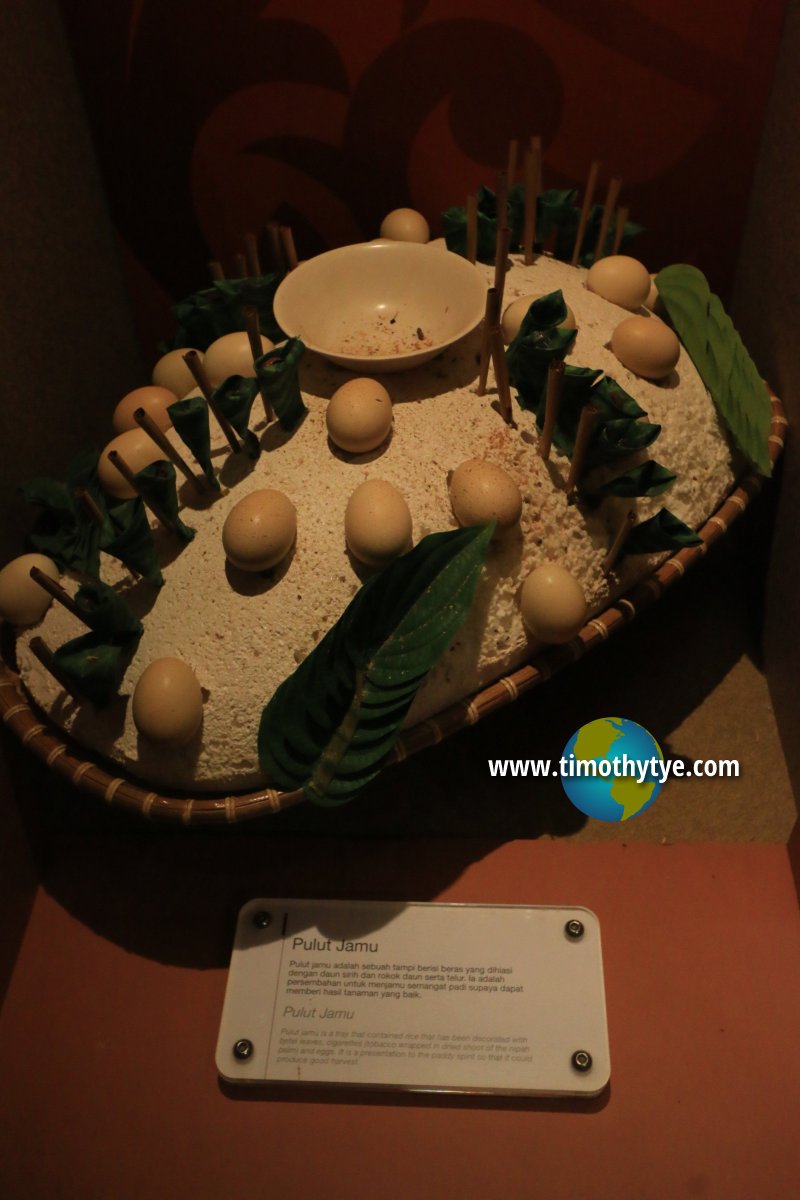 Pulut Jamu. (10 July, 2016)
Pulut Jamu. (10 July, 2016)
Pulut Jamu is a tray containing rice decorated with betel leaves, rolled cigarettes (comprising tobacco wrapped in dried shoot of the nipah palm) and eggs. This is an offering to the rice spirit for a good harvest.
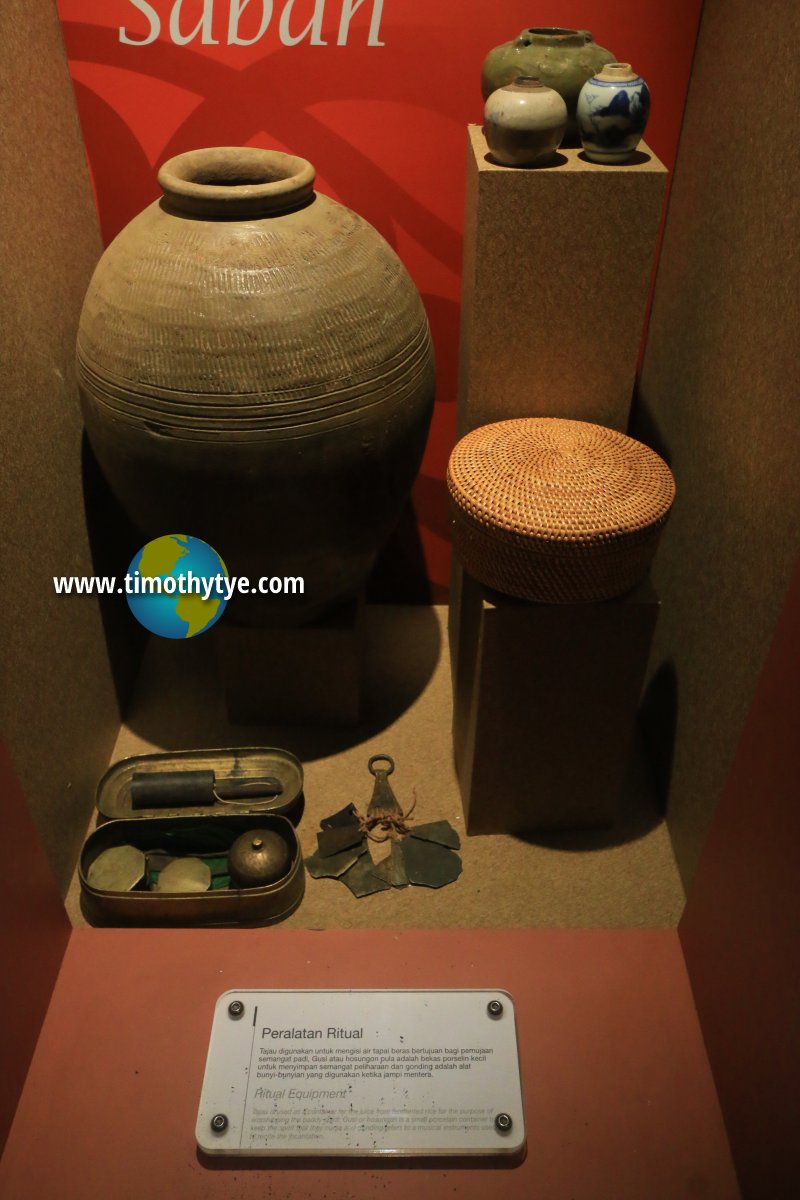 Ritual implements. (10 July, 2016)
Ritual implements. (10 July, 2016)
The implements shown above are used for the worship of the rice spirit. They include the tajau, a container for holding the juice made from fermented rice, for the worship of the rice spirit. The small porcelain container is called gusi or hosungan. It is used to hold the spirit. Gonding is a musical instrument used in incantations.
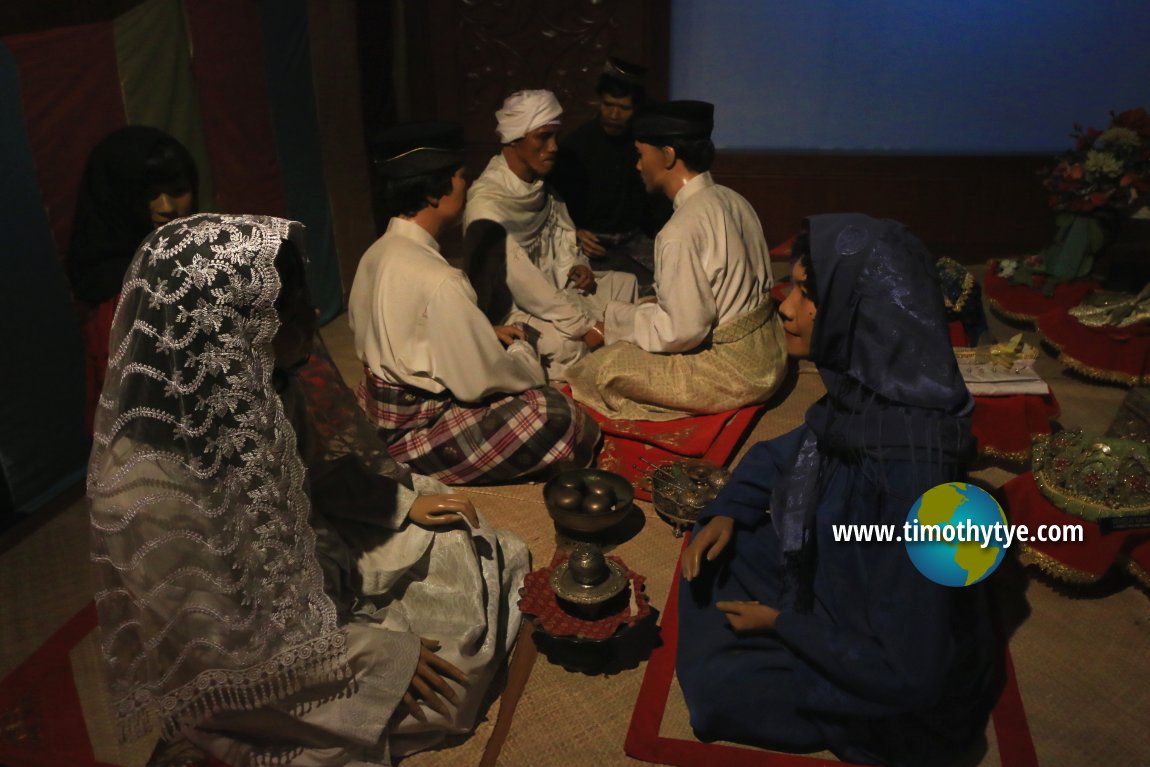 Akad Nikah, or betrothal ceremony. (10 July, 2016)
Akad Nikah, or betrothal ceremony. (10 July, 2016)
 Bersanding ceremony. (10 July, 2016)
Bersanding ceremony. (10 July, 2016)
Bersanding literally means "sitting together on the bridal couch". The bridal couch, or pelamin is a dais that is central to the ceremony. There would be one at the bride's house, and another at the groom's. Its purpose is to showcase to the family members and relatives of both sides that the couple have been joined as one in matrimony.
Malay weddings start in the morning, at the groom's house, where there would be a kenduri kahwin, or wedding banquet. Accompanied by an all-male kompang troupe, he is escorted to the bride's house. On arrival there, he has to pass through various stations where he has to pay a "toll" to pass through, before reaching the pelamin, where he takes his place beside his bride.
In front of the pelamin is an astakona, the tiered pedestalled tray on which various items are placed on each tier, among them nasi kunyit (glutinous rice dyed yellow with tumeric) and boiled eggs dyed red. The astakona is later presented to the matron of ceremony, called emak pengantin, in appreciation for her help in ensuring the smooth running of the ceremony.
Done with the ceremony at the bride's house, the bridal couple returns to the groom's house in a procession accompanied by a hadrah band, which is an all-male troupe. What follows is more feasting of the kenduri kahwin. At the conclusion of the wedding ceremony, the bridal couple returns to the bride's home to pay their respects.
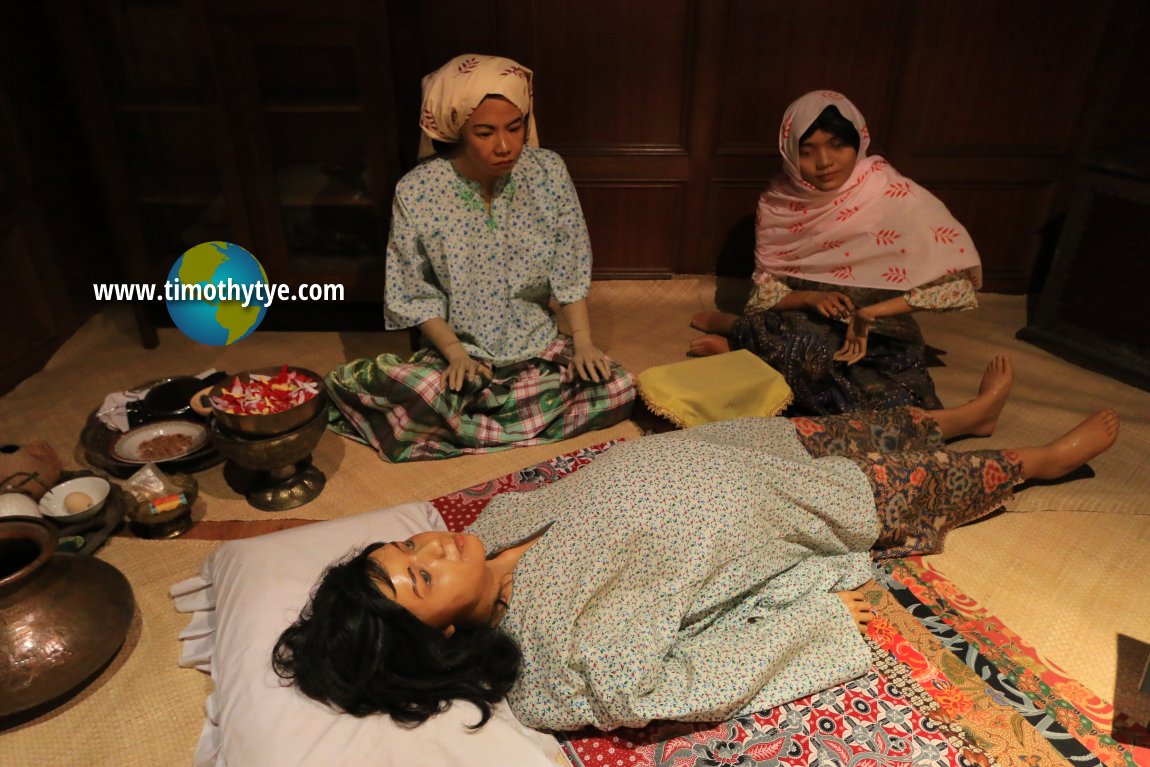 Adat Melenggang Perut, or Baby Divining. (10 July, 2016)
Adat Melenggang Perut, or Baby Divining. (10 July, 2016)
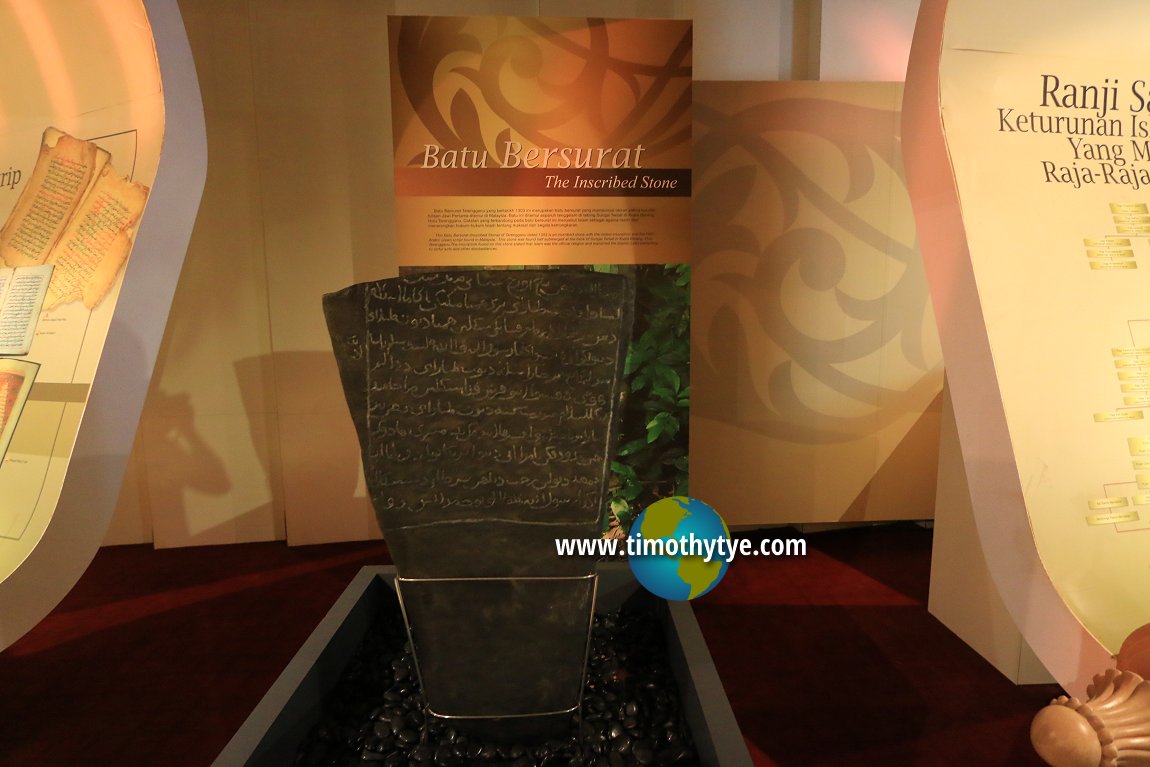 Replica of Batu Bersurat Terengganu. (10 July, 2016)
Replica of Batu Bersurat Terengganu. (10 July, 2016)
The Batu Bersurat Terengganu is an inscribed stone or stelae dated 1303. It is the oldest extant inscription in the Jawi script found in Malaysia. The stone was discovered half submerged at the bank of Sungai Tersat, in Kampung Buluh, in Kuala Berang, Terengganu, in the year 1887.
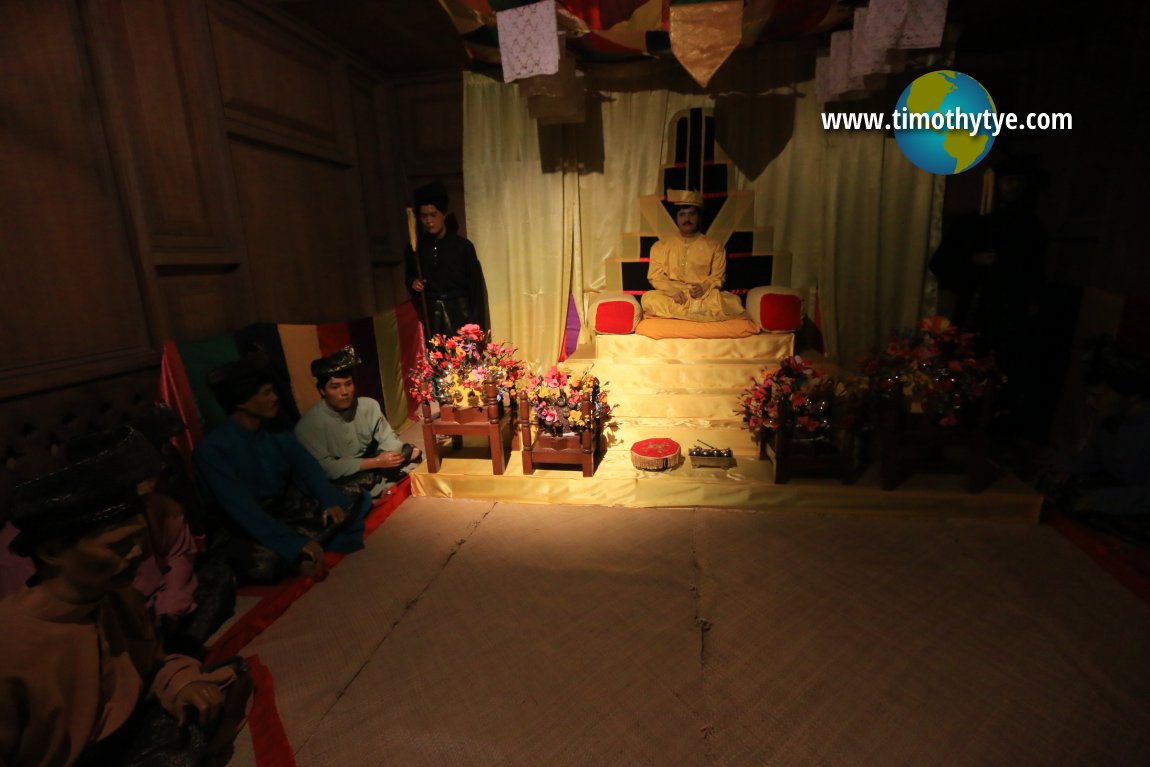 Kerjan. (10 July, 2016)
Kerjan. (10 July, 2016)
Kerjan is the installation ceremony for district chiefs such as the undang and penghulu. All the undang and penghulu are elected or appointed among the members of the Biduanda faction, with the exception of the penghulu of Luak Gunung Pasir, Suku Tanah Datar and Luak Terachi of Suku Seri Lemak Minangkabau, who hold the position for life, unless forced to relinquish the position for having committed a specific transgression.
The institution of Malay rulers is still practised in nine states in Malaysia, namely Perlis, Kedah, Johor, Perak, Selangor, Negeri Sembilan, Pahang, Kelantan and Terengganu. All the rulers take the title of Sultan, with the exceptions of Perlis, where the ruler is called Raja, and Negeri Sembilan, where the ruler is called Yang di-Pertuan Besar.
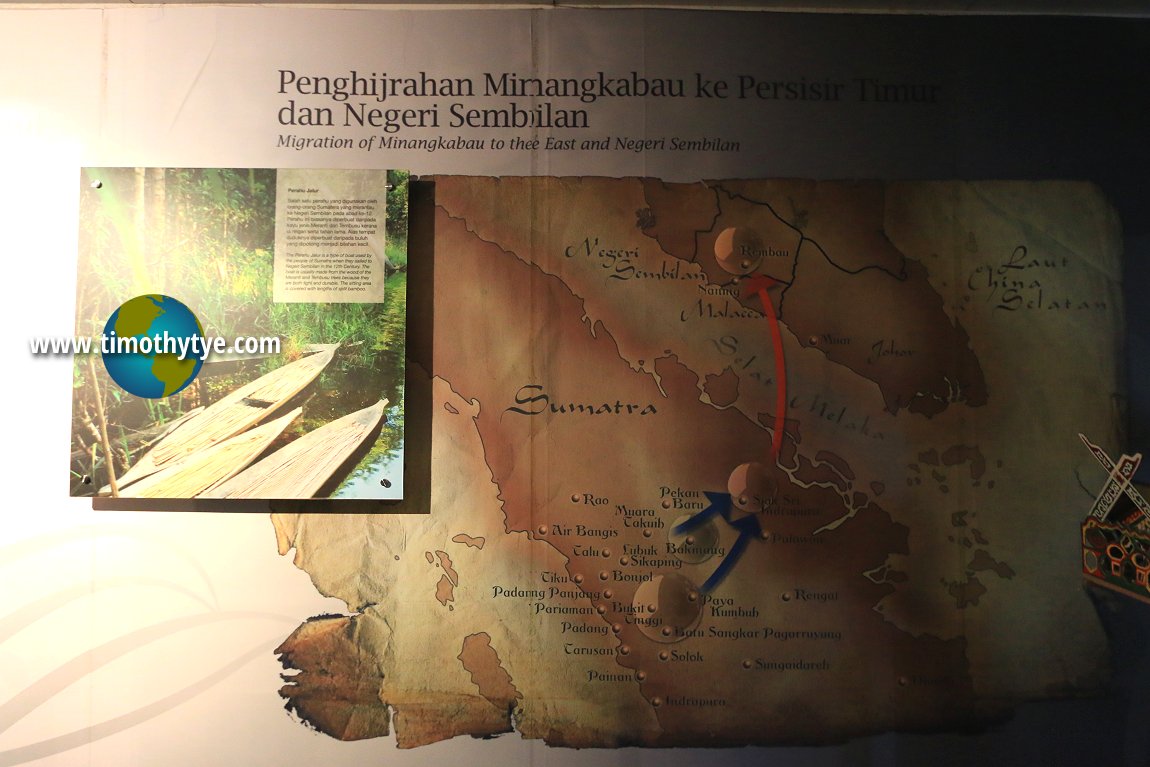 History of the migration of the Minangkabau people from West Sumatra to Negeri Sembilan. (10 July, 2016)
History of the migration of the Minangkabau people from West Sumatra to Negeri Sembilan. (10 July, 2016)
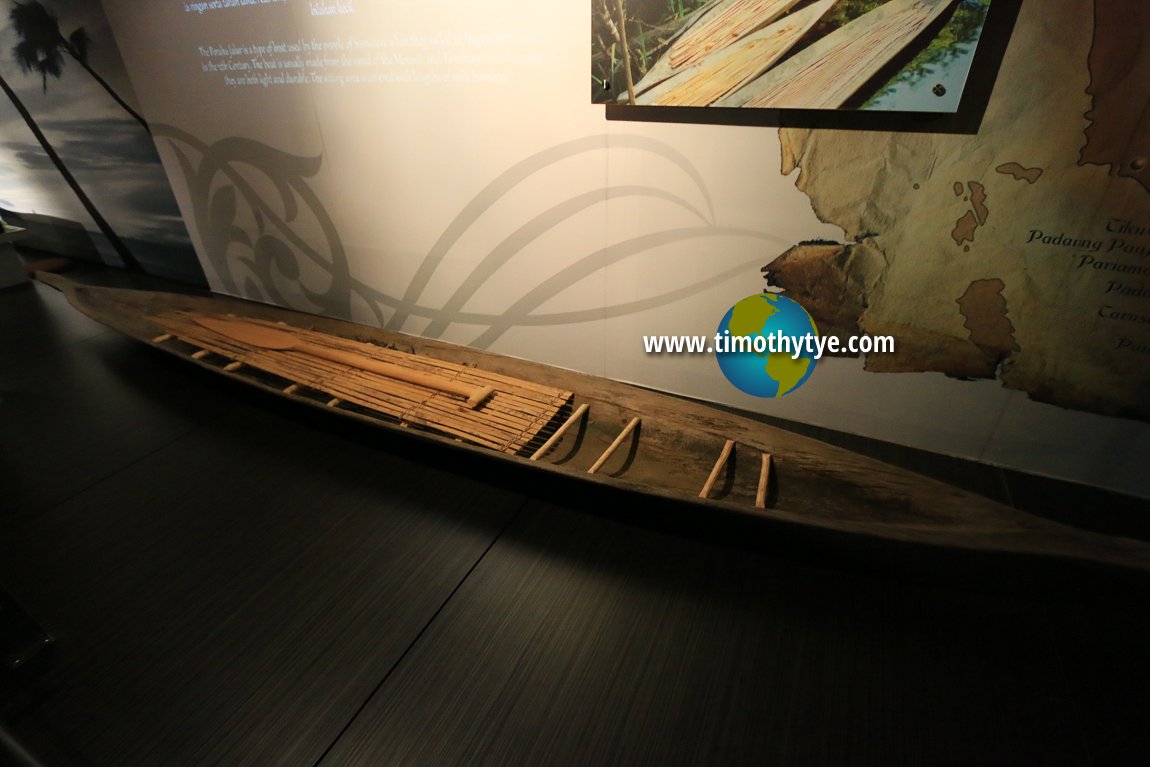 Perahu Jalur. (10 July, 2016)
Perahu Jalur. (10 July, 2016)
Perahu Jalur is a boat used by the people of Sumatra when they sailed across the Straits of Malacca to arrive in Negeri Sembilan in the 12th century. The boat is made from the wood of the meranti and tembusu trees as these are light and durable. The seat is covered with lengths of bamboo.
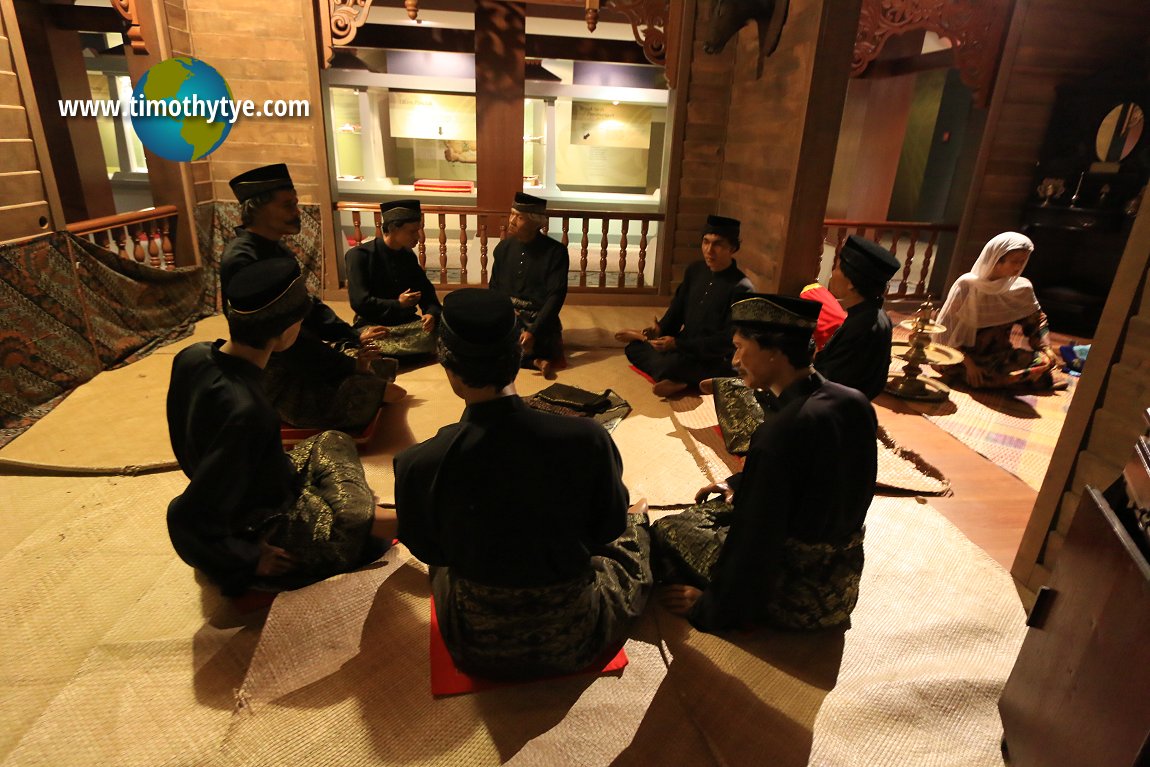 Datuk Lembaga. (10 July, 2016)
Datuk Lembaga. (10 July, 2016)
Datuk Lembaga is a committee of ceremonial elders. In this exhibit, it is the eight ceremonial elders of Jelebu who are collectively called the Lembaga Tiang Balai Luak Jelebu. They are figuratively the pillars of society, and each elder represents his own clan.
Originally, the Yang Di-Pertuan Besar of Negeri Sembilan was selected from Pagar Ruyung and Minangkabau in Sumatra. This began in the early 18th century, and continued for about a hundred years before the last ruler, the Yang Di-Pertuan Besar from Pagar Ruyung, was forced to relinquish the title, and from then on, a local Negeri Sembilan chieftain was elected to be the Yang Di-Pertuan Besar. When this institution was established, the ruler was given the title of Yang Di-Pertuan Besar Seri Menanti, having his seat of power at the royal town of Seri Menanti.
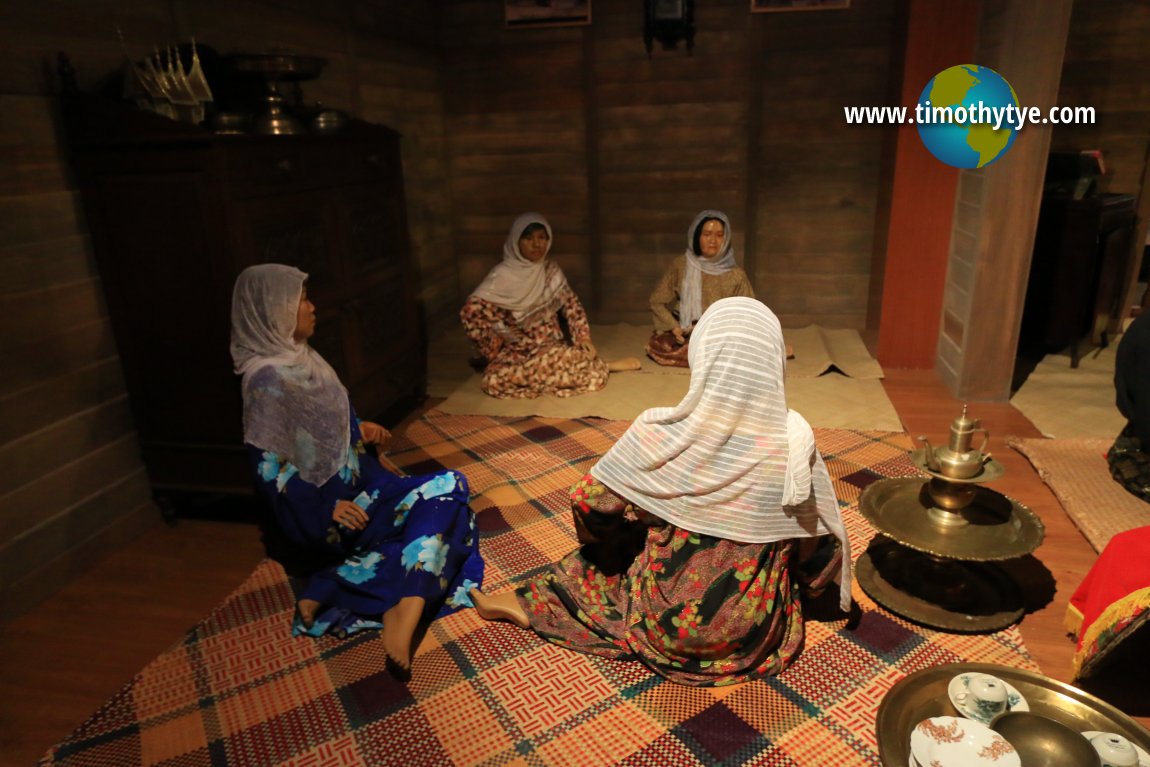 . (10 July, 2016)
. (10 July, 2016)
Ibu Soko is a matriach of an adat community. She has direct involvement in the selection and installation of adat elders within her family group. This person is well versed in the customs and ways of the adat, and is knowledgeable of her clan's family history.
Muzium Adat on Google Maps Street View
Muzium Adat (May 2014)Muzium Adat is ![]() on the map of Kuala Klawang
on the map of Kuala Klawang
List of Museums in Negeri Sembilan and Museums in Malaysia
 Latest updates on Penang Travel Tips
Latest updates on Penang Travel Tips
 Map of Roads in Penang
Map of Roads in Penang
Looking for information on Penang? Use this Map of Roads in Penang to zoom in on information about Penang, brought to you road by road.Disclaimer
Please use the information on this page as guidance only. The author endeavours to update the information on this page from time to time, but regrets any inaccuracies if there be any.
Copyright © 2003-2025 Timothy Tye. All Rights Reserved.

 Go Back
Go Back on the map of
on the map of